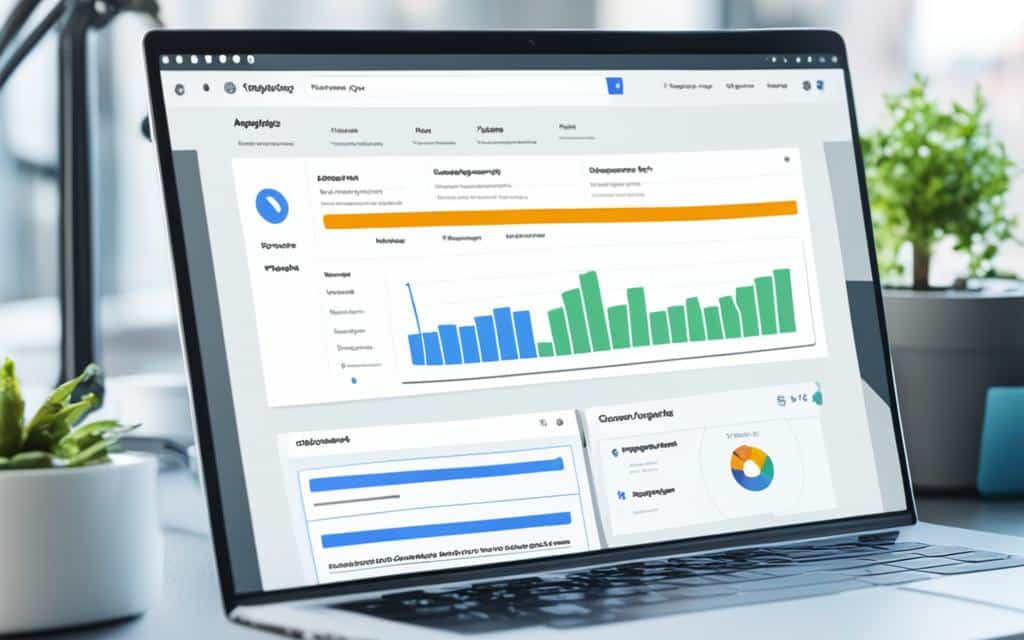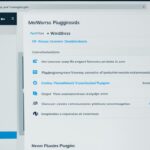Table of Contents
Google Analytics is a powerful tool that allows you to track traffic to your WordPress website. To set up Google Analytics for WordPress, you have several options available. One option is to use a plugin like Google Site Kit or MonsterInsights, which simplify the installation process by providing an easy-to-use interface. Another option is to manually add the Google Analytics tracking code to your website’s header.php file. Whichever method you choose, setting up Google Analytics for WordPress is essential for gaining insights into your website’s performance and user behavior.
Adding Google Analytics to your WordPress website will provide you with valuable data about your website’s traffic, user engagement, and conversion rates. With this information, you can make informed decisions to optimize your website and improve your online presence. Whether you’re a blogger, an online retailer, or a small business owner, understanding your website’s performance is crucial for success in the digital world.
By tracking metrics such as page views, traffic sources, bounce rate, and more, you can identify areas for improvement and implement strategies to attract more visitors and convert them into customers. Google Analytics provides detailed reports and insights that help you understand your audience better, tailor your content to their needs, and make data-driven marketing decisions.
In the following sections, we will explore two methods of setting up Google Analytics for WordPress: using a plugin like MonsterInsights and adding the tracking code manually. Both methods have their advantages and are suitable for different levels of technical expertise. Choose the method that best suits your needs and get started with tracking your website’s performance today.
Adding Google Analytics with MonsterInsights
Adding Google Analytics to your WordPress website is a crucial step in gaining valuable insights into your site’s performance and user behavior. And with the help of MonsterInsights, a popular Google Analytics plugin for WordPress, this process becomes effortless and code-free.
To get started, follow these simple steps:
- Step 1: Download and Install MonsterInsights
To add Google Analytics with MonsterInsights, you’ll need to download and install the plugin. Here’s how:
- Log in to your WordPress Dashboard
- Navigate to Plugins > Add New
- Search for MonsterInsights and click “Install Now”
- Once the installation is complete, click “Activate”
- Step 2: Connect MonsterInsights to Google Analytics
After activating MonsterInsights, you’ll need to connect it to your Google Analytics account. Here’s how:
- Go to Insights > Settings
- Click on the “Authenticate with your Google account” button
- Follow the prompts to grant MonsterInsights access to your Google Analytics account
- Once authenticated, enter your license key in the corresponding field
- Click “Connect MonsterInsights”
- Step 3: Enable Tracking and Access Metrics
Once connected, MonsterInsights will automatically add the Google Analytics tracking code to your WordPress site. Now, you can access your Google Analytics metrics right from your WordPress admin interface.
Here are some of the key metrics you can track with MonsterInsights:
| Metric | Description |
|---|---|
| Page Views | The number of times pages on your website are viewed by visitors. |
| Bounce Rate | The percentage of visitors who leave your site after viewing only one page. |
| Traffic Sources | The channels that drive traffic to your website, such as organic search, social media, or referrals. |
With MonsterInsights, you can gain deeper insights into these metrics and more, helping you make data-driven decisions to improve your website’s performance and user experience.
Adding Google Analytics to WordPress with MonsterInsights is a seamless process that empowers you to track and analyze your website’s performance effectively. Keep a close eye on your metrics, make informed optimizations, and take your online presence to new heights.
Adding Google Analytics Manually
If you prefer to add Google Analytics to your WordPress website manually, you can do so by adding the tracking code to your website’s header.php file. This method provides you with more control over the placement of the tracking code, but it does require some basic knowledge of HTML and website development.
To begin, follow these steps:
- Go to the WordPress Dashboard and navigate to Appearance > Editor.
- From the list of files on the right, select the header.php file.
- Within the header.php file, locate the closing
</head>tag. - Insert the Google Analytics tracking code just before the closing
</head>tag. You can obtain this code from your Google Analytics account. - Save the changes to the header.php file.
Once the code is added and the changes are saved, Google Analytics will begin tracking your website data. This tracking code allows Google Analytics to collect valuable information about your website visitors, including their demographics, browsing behavior, and traffic sources.
Remember, if you have multiple themes installed on your WordPress website, you’ll need to repeat these steps for each theme you are actively using.
Adding Google Analytics manually is a viable option for website owners who want complete control over their tracking code and have the technical expertise to make manual edits to their website’s files. However, if you’re not comfortable with coding, there are user-friendly plugins available that can automate the process for you.
Benefits of Manual Google Analytics Integration for WordPress
Manual Google Analytics integration for WordPress offers several advantages:
- Greater control over the placement and customization of the tracking code.
- Opportunity to learn and improve your HTML and website development skills.
- Ability to add additional tracking scripts or customize the existing code.
- Less reliance on third-party plugins that may impact website performance.
- Familiarity with the inner workings of your website and its code structure.
By taking the time to manually integrate Google Analytics into your WordPress website, you can harness the full potential of this powerful analytics tool while also gaining a deeper understanding of the technical aspects of your site.
Next, let’s explore the process of setting up Google Analytics for WordPress using a popular plugin, MonsterInsights.
| Advantages | Disadvantages |
|---|---|
| Greater control over tracking code placement and customization | Requires HTML and website development knowledge |
| Opportunity to improve HTML and website development skills | Time-consuming process |
| Ability to add additional tracking scripts or customize code | Potential for errors if not familiar with coding |
| Less reliance on third-party plugins | May require repeating the process for each theme used |
| Familiarity with website’s code structure |
Conclusion
As we wrap up this article, it’s clear that Google Analytics is an essential tool for tracking and analyzing website traffic. Whether you choose to integrate Google Analytics with a plugin like MonsterInsights or manually add the tracking code, setting up Google Analytics is paramount to gaining valuable insights into your WordPress website’s performance and user behavior.
By monitoring metrics such as page views, traffic sources, and bounce rate, you can make informed decisions to optimize your website and enhance your online presence. Google Analytics provides you with the data needed to understand your audience, identify patterns, and tailor your content and marketing strategies accordingly.
In conclusion, take the necessary time to set up Google Analytics for your WordPress website and elevate your site’s insights. With a comprehensive understanding of how your website is performing, you can make informed decisions that will drive success and help you achieve your goals. Don’t underestimate the power of data – make Google Analytics a priority and unlock its potential for your WordPress site today.
FAQ
How do I set up Google Analytics for WordPress?
To set up Google Analytics for WordPress, you have several options available. One option is to use a plugin like Google Site Kit or MonsterInsights, which simplify the installation process by providing an easy-to-use interface. Another option is to manually add the Google Analytics tracking code to your website’s header.php file.
How do I add Google Analytics to WordPress with MonsterInsights?
To add Google Analytics with MonsterInsights, you first need to download and install the plugin. Once the plugin is activated, you can connect it to your Google Analytics account by entering your license key. MonsterInsights will then automatically add the tracking code to your WordPress site and provide you with a dashboard where you can view your Google Analytics metrics.
How do I add Google Analytics to WordPress manually?
To add Google Analytics to your WordPress website manually, you can do so by adding the tracking code to your website’s header.php file. To begin, go to the WordPress Dashboard and navigate to Appearance > Editor. From there, select the header.php file and insert the Google Analytics tracking code just before the closing tag. This code can be obtained from your Google Analytics account.
Why is setting up Google Analytics for WordPress important?
Setting up Google Analytics for WordPress is crucial for gaining valuable insights into your website’s performance and user behavior. By tracking metrics such as page views, traffic sources, bounce rate, and more, you can make informed decisions to optimize your website and improve your overall online presence.












